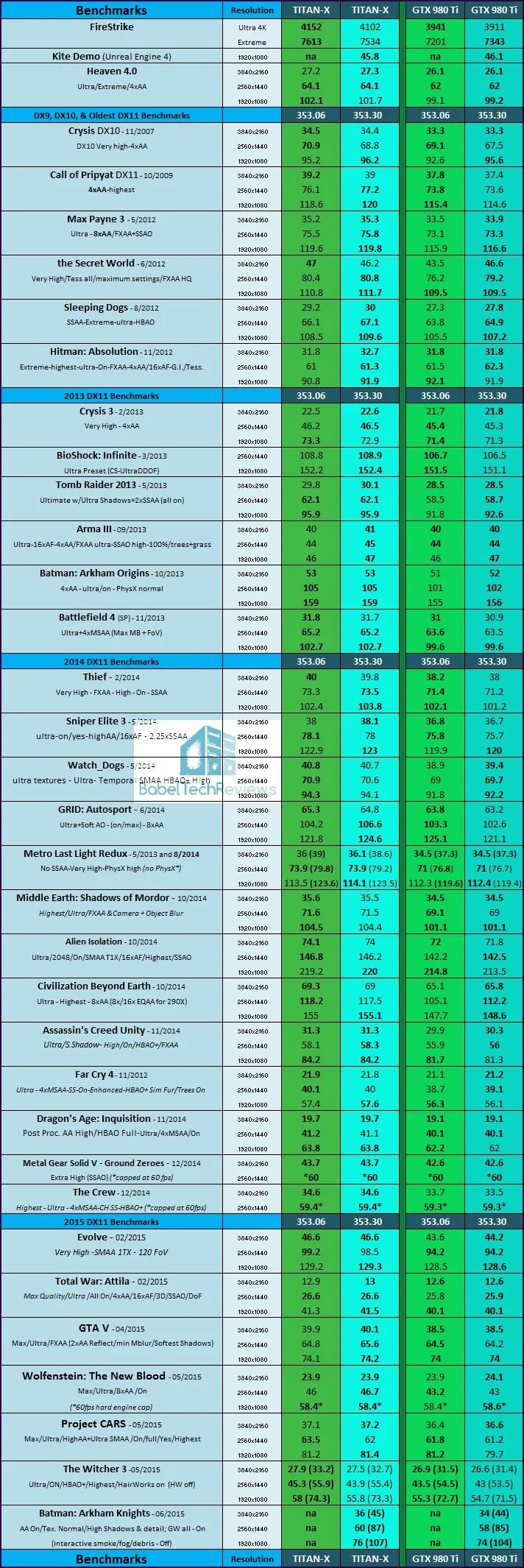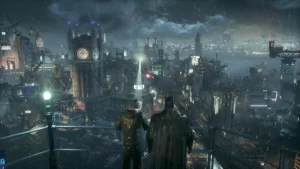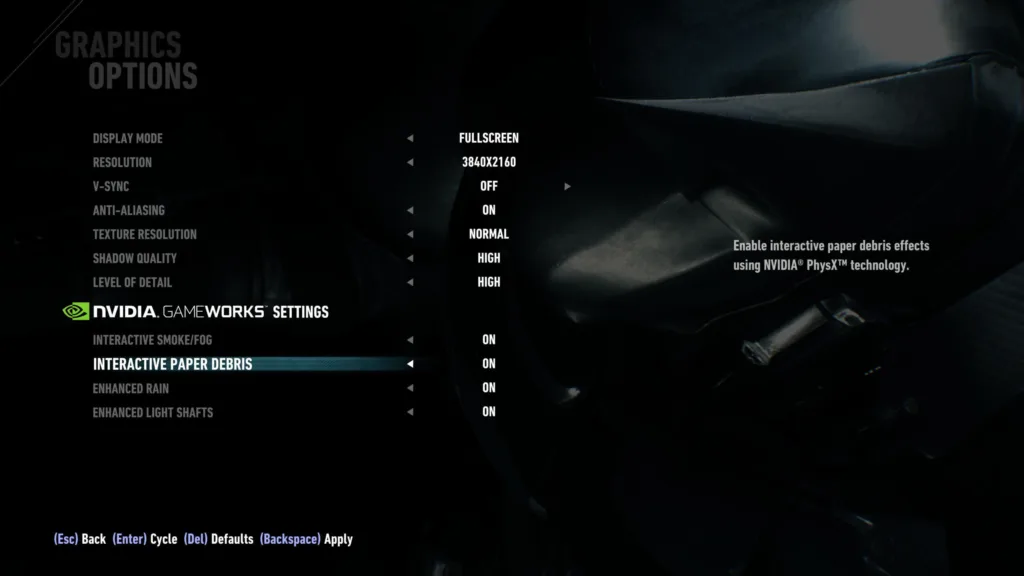As part of a regular feature for BabelTechReviews, this evaluation is comparing the performance of 32 game benchmarks with the GeForce WHQL 353.30 driver that was released the day before Batman: Arkham Knights on June 23, versus the last Geforce WHQL 353.06 driver that was released the day before the Witcher 3 launched on May 31. We want to document the performance changes of the current driver. We are also benching for an upcoming evaluation of the new EVGA GTX 980 Ti SC versus Fury X to be published here this weekend.
This driver performance analysis features Nvidia’s top two Maxwell cards although we plan to add the GTX 980 next, and we also plan to test Kepler in upcoming evaluations. We are going to give you the performance results of the GTX 980 Ti and the TITAN X at 1920×1080, 2560×1440, and at 3840×2160. This driver mini performance evaluation will give a natural comparison between the performance changes since Nvidia’s last WHQL driver set.
 We are going to test GeForce WHQL 353.30 using our current benchmark suite of 32 games plus 3 synthetic benchmarks. We have just added the “Kite Demo” on Unreal Engine 4 at 1920×1080 and Batman: Arkham Knight. Our testing platform is Windows 8.1 64-bit, using an Intel Core i7-4790K at 4.00GHz which turbos to 4.4GHz for all cores, an ASUS Z97E motherboard, and 16GB of Kingston “Beast” HyperX RAM at 2133MHz. The settings and hardware are identical except for the drivers being tested.
We are going to test GeForce WHQL 353.30 using our current benchmark suite of 32 games plus 3 synthetic benchmarks. We have just added the “Kite Demo” on Unreal Engine 4 at 1920×1080 and Batman: Arkham Knight. Our testing platform is Windows 8.1 64-bit, using an Intel Core i7-4790K at 4.00GHz which turbos to 4.4GHz for all cores, an ASUS Z97E motherboard, and 16GB of Kingston “Beast” HyperX RAM at 2133MHz. The settings and hardware are identical except for the drivers being tested.
At GTX 760 and above, we test at higher settings and resolutions generally than we test midrange and lower-end cards. Although all of our games are now tested at three resolutions: 3840×2160, 2560×1440 and 1920×1080 at 60Hz, and we use DX11 whenever possible with a very strong emphasis on the latest DX11 games. We no longer benchmark at 2560×1600, but now use the more popular 2560×1440 resolution.
Let’s get right to the test configuration, the driver release notes, and then to the results.
Test Configuration & Driver Release Notes
Test Configuration – Hardware
- Intel Core i7-4790K (reference 4.0GHz, HyperThreading and Turbo boost is on to 4.4GHz; DX11 CPU graphics), supplied by Intel.
- ASUS Z97-E motherboard (Intel Z97 chipset, latest BIOS, PCOe 3.0 specification, CrossFire/SLI 8x+8x)
- Kingston 16 GB HyperX Beast DDR3 RAM (2×8 GB, dual-channel at 2133MHz, supplied by Kingston)
- GeForce GTX 980 Ti, 6GB reference clocks, supplied by Nvidia
- GALAX GTX TITAN X, 12GB, reference clocks, supplied by Nvidia
- Two 2TB Toshiba 7200 rpm HDDs
- EVGA 1000G 1000W power supply unit
- Cooler Master 2.0 Seidon, supplied by Cooler Master
- Onboard Realtek Audio
- Genius SP-D150 speakers, supplied by Genius
- Thermaltake Overseer RX-I full tower case, supplied by Thermaltake
- ASUS 12X Blu-ray writer
- Monoprice Crystal Pro 4K
Test Configuration – Software
- Nvidia GeForce 353.06 WHQL drivers and GeForce 352.30 WHQL drivers for the GTX TITAN X and for the GTX 980 Ti. High Quality, prefer maximum performance, single display.
- VSync is off in the control panel.
- AA enabled as noted in games; all in-game settings are specified with 16xAF always applied; 16xAF forced in control panel for Crysis.
- All results show average, minimum and maximum frame rates except as noted.
- Highest quality sound (stereo) used in all games.
- Windows 8.1 64, all DX10 titles were run under DX10 render paths; DX11 titles under DX11 render paths. Latest DirectX
- All games are patched to their latest versions at time of publication.
The 32 Game benchmarks & 3 synthetic tests
- Synthetic
- Firestrike – Basic & Extreme
- Heaven 4.0
- Kite Demo, Unreal Engine 4
-
DX10
- Crysis
-
DX11
- STALKER, Call of Pripyat
- Max Payne 3
- the Secret World
- Sleeping Dogs
- Hitman: Absolution
- Tomb Raider: 2013
- Crysis 3
- BioShock: Infinite
- Metro: Last Light Redux (2014)
- Battlefield 4
- ArmA 3
- Batman: Arkham Origins
- Thief
- Sniper Elite 3
- Watch_Dogs
- GRID: Autosport
- Middle Earth: Shadows of Mordor
- Alien Isolation
- Assassin’s Creed Unity
- Civilization Beyond Earth
- Far Cry 4
- Dragon’s Age: Inquisition
- Metal Gear Solid V: Ground Zeroes
- The Crew
- Evolve
- Total War: Attila
- Wolfenstein: The Old Blood
- Grand Theft Auto V
- ProjectCARS
- the Witcher 3
- Batman: Arkham Origins
Since Batman: Arkham Knight is a new benchmark for BTR eventually replacing Batman: Arkham Origins, the settings we use are completely maxed-out, with every setting on and at the highest settings. Since GameWorks Interactive Smoke/Fog as well as Interactive Paper Debris depend on GPU PhysX and CUDA, they cannot be run on Radeons, we are now benching with those two settings On versus Off, much as we benchmark Metro Last Light Redux with PhysX On vs Off and the Witcher 3 with HairWorks On versus Off.
Batman: Arkham Knights was released last week and sales were halted due to bugs and performance issues that do not affect our PC. Last night, a 60MB patch was released and the current benches were run on that patch. The game itself is outstanding and we hope to have a performance/IQ evaluation of it next week.
The “Kite demo” is an Unreal 4 demo based on a custom dev version allowing use of the console that was put together by psolord at AnandTech VC&G forums. We run it at its default settings at 1920×1080 and use Fraps to measure its frame rates.
Lets look at Nvidia’s release highlights regarding the GeForce 353.30 WHQL driver before we head to performance testing.
Release Notes Highlights for GeForce 353.30
This is a really short list highlighting the fact that Nvidia’s WHQL driver release schedule is tied to the release of new games. For the comprehensive release notes, you will need to download the .pdf
Just in time for the highly anticipated title Batman: Arkham Knight this new GeForce Game Ready driver ensures you’ll have the best possible gaming experience. With support for GeForce SLI technology and one-click game setting optimizations within GeForce Experience, you’ll have the best possible performance and image quality during gameplay.
Game Ready
Best gaming experience for Batman: Arkham Knight, including support for SLI Technology and GeForce Experience 1-click optimizations.
Let’s head to the charts and compare the driver progress with the GTX 980 Ti and with the GTX TITAN X since we tested them last time.
Benchmarks & Performance Analysis
Here are our results of thirty-two games and 3 synthetics compared between GeForce 353.30 WHQL drivers, and GeForce 353.06 WHQL drivers using GTX Titan X and GTX 980 Ti. Each set of WHQL drivers is compared against the other in adjoining results column and the higher performance number is in bold. If there is a tie, both results are given in bold type.
We note mostly minor improvements with Nvidia’s new GeForce 353.30 over the older 353.06 drivers, and there are only a few standouts in only a few games. However, we generally see improvement.
Conclusion:
 So far, we would recommend upgrading to the latest GeForce 353.30 driver because there are generally incremental advantages, and no large performance-impacting negatives that we encountered. It is also the driver to use for the latest really fun games that we are playing including the Witcher 3, ProjectCARS and Batman: Arkham Knight. It appears that Nvidia intends to release a WHQL driver with each new major PC release and we are looking forward to evaluating the next one.
So far, we would recommend upgrading to the latest GeForce 353.30 driver because there are generally incremental advantages, and no large performance-impacting negatives that we encountered. It is also the driver to use for the latest really fun games that we are playing including the Witcher 3, ProjectCARS and Batman: Arkham Knight. It appears that Nvidia intends to release a WHQL driver with each new major PC release and we are looking forward to evaluating the next one.
Stay tuned, next up we are benching for an upcoming evaluation of the new EVGA GTX 980 Ti SC versus Fury X due this weekend.
Happy gaming!
